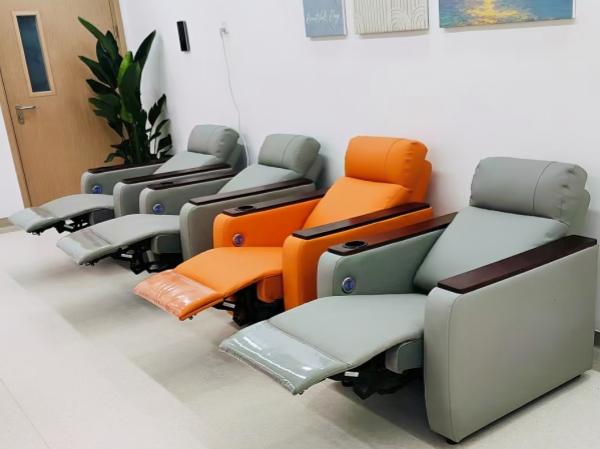In the medical space design and equipment selection process, a "chair" may seem simple, but there are actually fundamental differences between a qualified infusion chair and an ordinary one. For B-side clients such as hospitals, clinics, rehabilitation centers, and physical examination facilities, choosing the right infusion chair not only impacts patient comfort but also directly impacts diagnosis and treatment efficiency and medical workflow.
1. Different structural design—Designed specifically for "infusion scenarios."
While the core design of ordinary chairs is "sitting," the essence of infusion chairs is to allow patients to receive infusions comfortably and safely for extended periods while stationary:
Adjustable backrest: Infusion chairs typically feature manual or power backrest adjustment, and some even support a fully reclining position to meet the physiological needs of different patients.
Wide and stable armrests: These facilitate venipuncture and patient support, preventing wobbling.
Infusion stand port: Most infusion chairs have integrated IV stand holders on the chair body or backrest for convenient hanging of IV bags.
Additional footrests or legrests: These allow for leg elevation, preventing numbness or edema in the lower limbs caused by prolonged sitting.
Ordinary chairs lack functional features specifically designed for infusions and fail to meet the specialized requirements of clinical use.

2. improved comfort: Alleviating fatigue from prolonged infusions.
Infusions typically last from 30 minutes to 3 hours, affecting a wide range of patient ages. Comfort directly impacts the treatment experience. Infusion chairs typically feature:
High-density rebound foam seat and backrest;
Ergonomically designed with a curved design for lumbar and neck support;
Ultra-soft or medical leather upholstery for soft, skin-friendly comfort and easy cleaning.
In comparison, ordinary chairs are significantly less comfortable for extended sitting and are not suitable for clinical or nursing spaces.
3, ease of use – improving care efficiency.
Professional infusion chairs are designed with patient convenience in mind:
Open or removable side armrests facilitate patient in and out of the chair;
Some chairs have wheels for temporary patient repositioning;
One-touch return or quick folding options save space and facilitate cleaning;
A nurse's station aisle is located behind the chair back for easy access and operation.